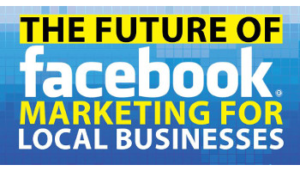 There is no question that Facebook is one of the most effective online marketing platforms for small businesses. Setting up an account is free, and you can post almost any kind of content within reasonable limitations, including written content, photographs, videos, and more. Paid advertising on Facebook is relatively inexpensive and can be capped to fit in any marketing budget, large or small.
There is no question that Facebook is one of the most effective online marketing platforms for small businesses. Setting up an account is free, and you can post almost any kind of content within reasonable limitations, including written content, photographs, videos, and more. Paid advertising on Facebook is relatively inexpensive and can be capped to fit in any marketing budget, large or small.
The key to using Facebook wisely is to stay on top of new trends as they emerge. You can’t afford to use the same marketing strategy that you used five years ago – or even one year ago. If you want the time and money you spend on Facebook marketing to pay off, you must find ways to keep up with changes on Facebook and use them to your advantage.
Dynamic Product Ads
Facebook advertising is well-established as a way for businesses to get in touch with both existing and prospective clients. One of the most promising new options for Facebook advertising is the Dynamic Product Ad. These ads work by showing customers one or more of your products based on their activity on your website or mobile app.
There are only a few easy steps required to set up a Dynamic Product Ad:
- Upload your product catalog to Facebook. A product catalog is a list of the products you want to advertise on Facebook, and it includes several pieces of information about each product. You can find step-by-step instructions for creating a product catalog here.
- Put the Facebook pixel on your website and modify it to include the products you want to promote. If you’re using a mobile app, you’ll have to install App Events to track activity. The purpose of doing this is to help track user activity so you can target your ads.
- Create your ad template. You can use any products you want to use from your product catalog. For example, you might want to show a client who looked at a down coat some boots, scarves, and other outdoor apparel.
- Run your ad and track the results. As they do with any other ad, Facebook will provide you with detailed data so you can modify your ad as needed.
The benefit of using Dynamic Product Ads is that they are a powerful form of retargeting, and you have the opportunity to display a moving ad with a series of pictures – something that’s more eye-catching than a traditional, static ad.
Facebook Live Video
Videos have been a popular form of Facebook marketing for some time, but they’re more important now than ever before thanks to the addition of Facebook Live Video. Live Video provides companies with the opportunity to interact directly with their followers in real time so they can take questions, share up-to-date information, and provide real value to their customers.
As of this writing, Facebook Live Video is not available to everyone. However, the chances are good that it will be before long. It’s an ideal way to answer questions from customers, unveil a new product, or share a demonstration of a product. You can also use it to give a virtual tour of your plant or store, or to show employees at work.
If you have access to Live Video, you can start broadcasting from your mobile device. Facebook has recently made it possible for users to broadcast using other video tools, but if you are on mobile, all you need to do is click on the “Live” icon in the status update box – it looks like the silhouette of a person – and follow the steps.
Canvas Ads for Mobile Users
One of the primary complaints about mobile advertising is that even if a user clicks on your ad, it takes too long for them to get to your page – resulting in a high bounce rate. Facebook has decided to attack this problem directly by introducing Canvas Ads, a new immersive ad experience for mobile users.
In a nutshell, a Canvas Ad is a mobile ad that loads nearly instantaneously when a user clicks on it. It redirects them to a full-screen ad that is fully interactive. You can use photographs, videos, text, and call to action buttons in any combination that works for your brand.
Some of the interactive features allow users to zoom in on a particular product, swipe through to view a carousel of images, or even tilt their phones to see a panoramic image. These features allow advertisers to be creative and provide their customers with unique mobile content that they can engage with in whatever way suits them best.
Video Captioning
Recently, Facebook introduced automatic playback for videos that appear in users’ newsfeeds. While this might be seen as a boon for advertisers, it is often an annoyance for users who might be startled by a sudden burst of sound from a video.
One option that allows you to take advantage of the benefits of automatic playback and minimize irritation is the addition of video captions. When you add captions to your video, what happens is that the captions play automatically (with the sound muted.) The movement of the video will still catch the eye, but without the troubling (and often unwanted) sound that accompanies it. If a user wants to add sound, all they need to do is click the speaker icon on the video to enable the sound playback.
Customer Service Tools
Aware that an increasingly large number of businesses are using Facebook for customer service, the social media site has added some options to help businesses manage their responses to customers. One is the addition of the Response Time, which shows visitors to your page how long it typically takes you to respond to comments and inquiries. You don’t have to do anything to add this feature. It appears automatically and will give you special status if you respond in less than five minutes.
The other customer service tool you need to know about is the status feature, which allows you to set an “Away” status when you know you won’t be available to respond to questions. That’s a feature that can help decrease the chances that a customer will be annoyed if you don’t respond right away.
The world of Facebook marketing is constantly evolving. As the above features become commonplace and available to everybody, there is no doubt that Mark Zuckerberg and his team will continue to add new advertising options.
